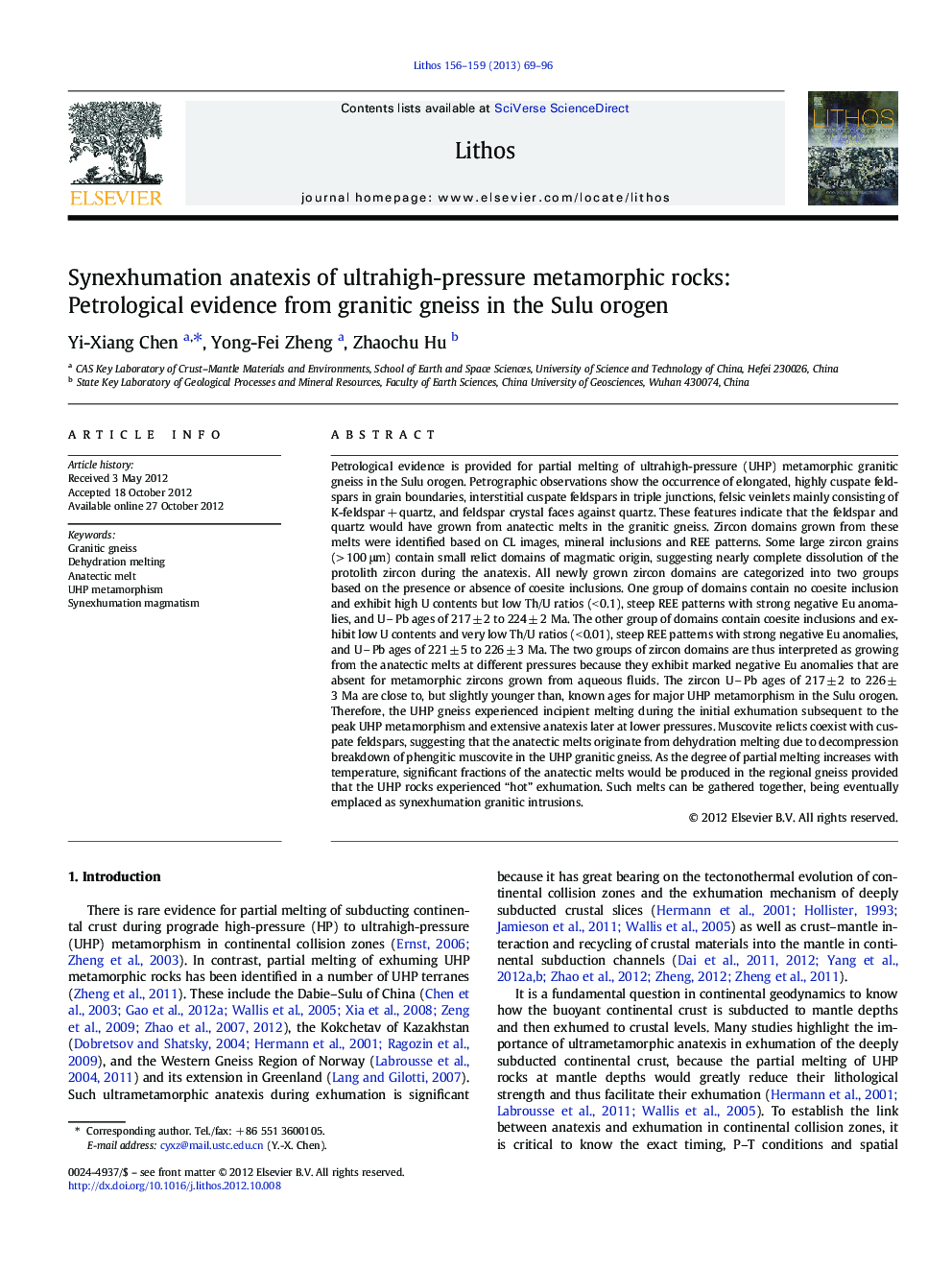| کد مقاله | کد نشریه | سال انتشار | مقاله انگلیسی | نسخه تمام متن |
|---|---|---|---|---|
| 4716379 | 1638697 | 2013 | 28 صفحه PDF | دانلود رایگان |

Petrological evidence is provided for partial melting of ultrahigh-pressure (UHP) metamorphic granitic gneiss in the Sulu orogen. Petrographic observations show the occurrence of elongated, highly cuspate feldspars in grain boundaries, interstitial cuspate feldspars in triple junctions, felsic veinlets mainly consisting of K-feldspar + quartz, and feldspar crystal faces against quartz. These features indicate that the feldspar and quartz would have grown from anatectic melts in the granitic gneiss. Zircon domains grown from these melts were identified based on CL images, mineral inclusions and REE patterns. Some large zircon grains (> 100 μm) contain small relict domains of magmatic origin, suggesting nearly complete dissolution of the protolith zircon during the anatexis. All newly grown zircon domains are categorized into two groups based on the presence or absence of coesite inclusions. One group of domains contain no coesite inclusion and exhibit high U contents but low Th/U ratios (< 0.1), steep REE patterns with strong negative Eu anomalies, and UPb ages of 217 ± 2 to 224 ± 2 Ma. The other group of domains contain coesite inclusions and exhibit low U contents and very low Th/U ratios (< 0.01), steep REE patterns with strong negative Eu anomalies, and UPb ages of 221 ± 5 to 226 ± 3 Ma. The two groups of zircon domains are thus interpreted as growing from the anatectic melts at different pressures because they exhibit marked negative Eu anomalies that are absent for metamorphic zircons grown from aqueous fluids. The zircon UPb ages of 217 ± 2 to 226 ± 3 Ma are close to, but slightly younger than, known ages for major UHP metamorphism in the Sulu orogen. Therefore, the UHP gneiss experienced incipient melting during the initial exhumation subsequent to the peak UHP metamorphism and extensive anatexis later at lower pressures. Muscovite relicts coexist with cuspate feldspars, suggesting that the anatectic melts originate from dehydration melting due to decompression breakdown of phengitic muscovite in the UHP granitic gneiss. As the degree of partial melting increases with temperature, significant fractions of the anatectic melts would be produced in the regional gneiss provided that the UHP rocks experienced “hot” exhumation. Such melts can be gathered together, being eventually emplaced as synexhumation granitic intrusions.
► We provide petrological evidence for anatexis of UHP granitic gneiss during continental collision.
► Anatectic zircon was identified by the distinctive trace elements.
► Zircons record incipient melting after peak metamorphism and extensive anatexis during further exhumation.
► The dehydration-driven anatexis may be caused by phengite breakdown in the UHP rocks.
► Partial melting occurred more widely in the Sulu UHP terrane than previously thought.
Journal: Lithos - Volumes 156–159, January 2013, Pages 69–96